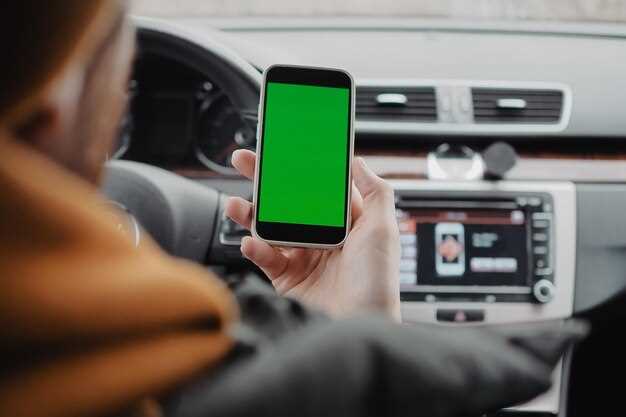
Apple CarPlay and Android Auto have revolutionized the way we interact with technology in our vehicles. These systems integrate your smartphone with your car’s infotainment system, allowing for seamless access to apps, navigation, and communication while on the road.
Understanding how to effectively use these platforms can significantly enhance your driving experience. Both Apple CarPlay and Android Auto offer user-friendly interfaces, but they also come with distinct features tailored to each operating system. Knowing the key functionalities of each system will enable you to make the most out of your time behind the wheel.
This guide will delve into the setup process, essential features, and tips for maximizing your interaction with Apple CarPlay and Android Auto. Whether you drive an iPhone or an Android device, you will find valuable insights to help you navigate and enjoy the best of what these automotive technologies have to offer.
Setting Up Apple CarPlay in Your Vehicle
Apple CarPlay allows you to connect your iPhone to your vehicle’s infotainment system, enabling access to various apps and features. Follow these steps to set up CarPlay in your vehicle:
- Check Compatibility:
Ensure your vehicle supports Apple CarPlay. Refer to the owner’s manual or the manufacturer’s website for compatibility information.
- Prepare Your iPhone:
Update your iPhone to the latest version of iOS. Ensure Bluetooth and Wi-Fi are enabled.
- Connection Method:
You can connect via a USB cable or wirelessly, depending on your vehicle:
- Wired Connection:
Use a Lightning to USB cable to connect your iPhone to the USB port labeled with the CarPlay icon.
- Wireless Connection:
Refer to your vehicle’s manual for specific wireless setup instructions. Generally, you’ll need to pair your iPhone with the car’s Bluetooth system.
- Wired Connection:
- Select CarPlay:
Once connected, your car’s display should show the CarPlay interface. Select the CarPlay icon on your infotainment screen if it doesn’t appear automatically.
- Customize CarPlay:
You can personalize the CarPlay display by pressing and holding an app icon to rearrange or remove it. Use Siri for hands-free operation.
- Access Apps:
Explore compatible apps such as Maps, Music, Messages, and other third-party applications designed for CarPlay.
If you encounter any issues, consult your vehicle’s manual or Apple’s support website for troubleshooting steps related to Apple CarPlay.
Connecting Your Android Device to Android Auto

Establishing a connection between your Android device and Android Auto is essential for enjoying seamless integration while driving. Follow these steps to connect your device effortlessly.
Step 1: Prepare Your Device
Make sure your Android smartphone runs Android 6.0 (Marshmallow) or higher. Additionally, download the Android Auto app from the Google Play Store if it is not pre-installed on your device.
Step 2: Connect via USB
Using a high-quality USB cable, connect your smartphone to the USB port in your car equipped with Android Auto. Ensure the cable is not damaged to prevent connectivity issues.
Step 3: Launch Android Auto
Once connected, your car’s display should automatically prompt you to launch Android Auto. If it doesn’t, access the app via your car’s infotainment system.
Step 4: Grant Permissions
Your Android device may request permissions to allow access to various features such as contacts, messaging, and location services. Grant the necessary permissions to ensure full functionality.
Step 5: Explore Features
After successfully connecting, you can explore various features offered by Android Auto, including navigation, music, and messaging apps. Use voice commands or the touchscreen interface for easy access.
Following these steps ensures a smooth connection between your Android device and Android Auto, increasing safety and convenience while you drive.
Using Voice Commands with CarPlay and Android Auto

Voice commands enhance the driving experience by allowing users to interact with their devices hands-free, providing a safer way to control functions while on the road. Both Apple CarPlay and Android Auto support voice command features that enable drivers to manage navigation, calls, messages, and music through simple verbal instructions.
For Apple CarPlay, users can activate Siri by pressing and holding the voice command button on the steering wheel or by saying “Hey Siri.” Once activated, drivers can ask Siri to send texts, make calls, change music tracks, or set directions. The integration ensures that users can focus on driving while receiving timely updates and alerts.
Android Auto utilizes Google Assistant, which can be triggered by pressing the voice command button or by saying “OK Google.” This feature allows users to access navigation via Google Maps, respond to messages through various apps, and control media playback seamlessly. Users can also ask for information such as weather updates or nearby points of interest without taking their eyes off the road.
Both systems benefit from contextual understanding, meaning users can issue multi-step commands. For example, one might say, “Navigate to the nearest gas station and play my driving playlist.” This efficiency streamlines the driving experience, making it easier to stay connected while minimizing distractions.
Moreover, regular updates to both platforms improve voice recognition accuracy and expand functionality, allowing for a continuously enhanced user experience. As voice command technology evolves, drivers can expect even more advanced features and capabilities from CarPlay and Android Auto in the future.